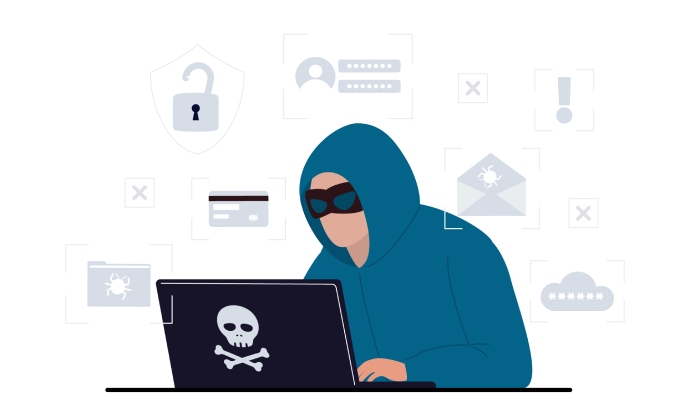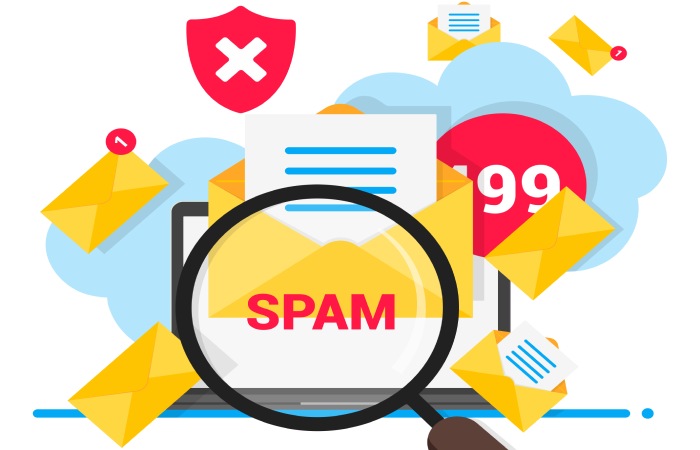With the growing dependence on technology in today’s digital world, phishing attacks are also evolving by each passing the day. For those who refuse to accept this claim, we have broken down the 2019 version of the Phishing and Fraud statistics, to prove that, so far, phishing has been the most extensive cyber threat to every large or small enterprise.
In phishing scams, humans are the most vulnerable. Everyone from employees on a simple entry-level position to the CEO or even members of the board of directors could be the primary target and also the victims of phishing scams, which skilled hackers explicitly plan to target the organizations.
Email Fraud Statistics – 2019
- Sixty per cent of the current population in the US has been exposed to such scam or security breaches at least once in their lifetime.
- Every year, organizations spend over $13 million to deal with the consequences of such sophisticated attacks.
- If you think that large businesses are the only ones affected, then consider this – small businesses spend an average of $500 every year on safeguarding themselves from malicious phishing attacks.
- It can take as long as 50 days to discover or report a data breach – enough time for some SMBs to go bust.
- Over 90 per cent of data breaches are due to phishing attacks.
- Seventy-six per cent of businesses reported being the victim of a phishing scam over the last year.
- Of all targeted users, around 30 per cent end up opening these fake emails.
- These security breaches are drastically increasing by around 11 per cent every year.
Phishing attacks use fake emails as they are the easiest to use. The malicious message, containing infected links, looks very similar to emails from trusted sources or big brands like PayPal, Google, or Amazon.
Some Influencing Techniques Used By Cyber Criminals
Attackers use various techniques to lure the victim into clicking the malicious links.
- Urgency: In this type of phishing emails, there is an urgent call for action that the receiver has to take.
- Reward: This type lures the victim by promising special prizes or bonuses.
- Loss: This type of phishing email exploits the inherent human tendency to respond in times of loss.
- Authority: Such type of emails claim to come from a person of authority, and require the receiver to respond immediately.
- Scarcity: This type taps into the tendency of humans to go for rare things. The message says that there is a specific item, which only, say, the first 20 respondents will get.
How To Prevent Phishing Attacks?
It is not possible to completely clear the cyberspace of such attackers. But we can take precautions to become better prepared to tackle them. If strict data protection policies are followed in your enterprise, your network systems will be safer.
Staying Updated With The Latest Technology
When you regularly update your system, you are always one step ahead of the adversary. Your IT department should ensure that all hardware, software, and system updates are correctly installed. If you are not updated, you are exposed to new threats.
Educating Employees
You should train employees of your organization well to distinguish a phishing message from an authentic one. Most phishing attacks are similar, although the context or the name may vary. To detect a malicious link, start with the address of the website to check the authenticity. Further, you can check for loopholes in the content or spelling mistakes.
No Local Control For Employees
It is better if employees cannot adjust security settings from their system. There should be a central system for handling security through strict policies.
Non-approved Sites
Blacklisting sites that are an active contributor to phishing scams is an adequate safeguard for your enterprise. This action not only prevents your employees from opening websites that may be malicious but also prevent phishing attack. Train your employees in detecting fake websites, which are rapidly springing up everywhere. Webroot reports that hackers are creating about 1.5 million new phishing sites every month.
Spam Setting
While updating all your firewalls, ensure that you also update your spam settings. As hackers become more advanced, they keep on inventing loopholes to surpass the old spam settings. To protect your system from such threats, you need to update the settings regularly.
Guarding Your Inbox
Keep your inbox free from any suspicious emails or any unrecognized senders. You should also refrain from entering any personal or financial details on an unknown site. Do not entertain messages received from unknown senders.
Minimizing the usage of Removable Media
Reducing or avoiding the use of removable media like SD cards and USB drives for your personal use is a good idea, but when it comes to enterprise security, system and network administrators must prevent the usage SD cards and USB drives or any such removable media by the employees. Removable media are highly prone to different malware attacks, and if there are situations when it is essential to use it, better have it completely scanned before and after using it.
Simulated Phishing Tests – An Innovative Way To Tackle Phishing
Keeping pace with the ever-advancing hackers, many organizations have come up with innovative ways to prepare their workforce better in case of malicious phishing attacks. One such method is by sending simulated and targeted phishing emails to the employees. These emails are structured just like an original malicious email, taking into account all the influencing parameters mentioned above. The organizations then monitor the click rate (employees who fall prey and click on the link). This result helps them in gauging the preparedness level of the staff, and also in spreading awareness of the type of content they can expect in a phishing email.
Tips For Recognizing Malicious Emails
- Legitimate businesses will never ask you for any login information or any personal and sensitive credentials.
- Watch out for the emails that convey a sense of urgency or fear.
- Warning emails are a simple way of luring you into fake traps. Ensure that you contact the company directly to inquire if the emails are authentic or not.
- Get rid of emails which are vague and are not explicitly addressing you. They are generally malware emails.
- Legitimate business emails will use the first or last name to address you.
Conclusion
Digitalization has infiltrated our lives extensively. It has also become a means for cyber-criminals to take advantage of the vulnerabilities of people. The need of the hour is to carry out awareness campaigns and phishing simulations to make the workforce better trained and better prepared in tackling such attacks.



